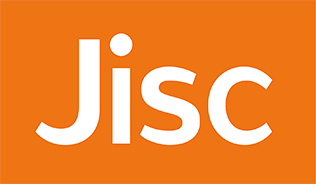Role of Market Orientation on Competitiveness of Manufacturing Firms in Kenya
DOI:
https://doi.org/10.54536/ajebi.v3i3.3472Keywords:
Competitiveness, Manufacturing Firms, Market Orientation, Resource-Based Theory, Top Management CommitmentAbstract
In order to be competitive, manufacturing firms have to embrace and undertake strategies that will make them perform exceedingly better than their rivals in the market. Such kind of strategies to be undertaken calls for the firm to make decisions and have principles that will direct their activities and generate a behaviour that is intended to propel the firm in the market-place. In this regard the main focus of this study was to examine the role of market orientation and moderating influence that top management commitment have on competitiveness of manufacturing firms in Kenya. Theoretically, this study was grounded on resource-based and upper echelon theories, and a descriptive survey design was adopted, which targeted 134 manufacturing firms registered members of the Machakos and Central Kenya Chapters of Kenya Association of Manufacturers. A census was undertaken of all the 134 firms that are members of the two chapters. Primary data was collected using a semi-structured questionnaire that were semi-structured questionnaire that was administered to the Chief Executive Officers/Directors of the firms under the study of which both quantitative and qualitative data was generated. To determine the relationship that exist between the variables regression analysis was used while Analysis of Variance (ANOVA) was used to determine the relationship between independent and dependent variables. The overall study findings revealed that market orientation had a positive and statistically significant role on competitiveness of manufacturing firms in Kenya and top management commitment had a positive moderating role. The study findings also noted that firms that are market-oriented have developed mechanisms that gather information about the customer continuously and are able to implement various strategies aimed at improving their competitiveness. Based on the findings, the study concluded that the competitiveness of manufacturing firms in Kenya depends not only on how they determine the needs and wants of the consumer but also on how effectively and efficiently they deliver satisfaction to them.
Downloads
References
Ateke, B. W., & Iruka, C. H. (2015). Investigating the relationship between customer involvement management and marketing performance in the manufacturing industry. International Journal of Research in Business Studies and Management, 2(9), 22-34.
Atikiya, R. (2015). Effect of competitive strategies on the performance of manufacturing firms in Kenya (Unpublished doctoral dissertation). Jomo Kenyatta University of Agriculture and Technology. http://hdl.handle.net/123456789/1782
Awang, A., Ahmad, Z. A., Asghar, A. R. S., & Subari, A. K. (2010). Entrepreneurial orientation among Bumiputera small and medium agro-based enterprises in West Malaysia: Policy implications in Malaysia. International Journal for Business and Management, 5(5), 130-143. https://doi.org/10.5539/ijbm.v5n5p130
Awino, Z. B., & Gituro, W. (2011). An empirical investigation of supply chain management best practices in large private manufacturing firms in Kenya. Prime Journal of Business Administration and Management, 1(5), 154-162. http://hdl.handle.net/11295/13878
Bature, S. W., Sallehuddin, R. M., Rosli, N. A., & Saad, S. (2018). Proactiveness, innovativeness, and firm performance: The mediating role of organizational capability. Academy of Strategic Management Journal, 17(5), 1-14.
Bigsten, A., & Soderbom, M. (2006). What have we learned from a decade of manufacturing enterprise surveys in Africa? The World Bank Research Observer, 21(2), 241-265. https://doi.org/10.1093/wbro/lkl003
Carpenter, M. A. (2002). The implications of strategy and social context for the relationship between top management team heterogeneity and firm performance. Strategic Management Journal, 23(3), 275-284. https://doi.org/10.1002/smj.226
Carpenter, M. A., Geletkanycz, M. A., & Sanders, W. G. (2004). Upper echelons research revisited: Antecedents, elements, and consequences of top management team composition. Journal of Management, 30(6), 749-778. https://doi.org/10.1016/j.jm.2004.06.001
Coad, A. (2018). Firm age: A survey. Journal of Evolutionary Economics, 28, 13–43. https://doi.org/10.1007/s00191-017-0532-6
Coad, A., Agustí, S., & Mercedes, T. (2013). Like milk or wine: Does firm performance improve with age? Structural Change and Economic Dynamics, 24, 173–189. https://doi.org/10.1016/j.strueco.2012.07.002
Coopers, D. R., & Schindler, P. S. (2003). Business research methods (8th ed.). McGraw-Hill/Irwin.
Coopers, D. R., & Schindler, P. S. (2006). Business research methods (9th ed.). McGraw-Hill/Irwin.
Coopers, D. R., & Schindler, P. S. (2011). Business research methods (11th ed.). McGraw-Hill.
Creswell, J. W. (2013). Qualitative inquiry and research design: Choosing among five approaches (3rd ed.). SAGE.
Eggers, F., Kraus, S., Hughes, M., Laraway, S., & Snycerski, S. (2013). Implications of customer and entrepreneurial orientations for SME growth. Management Decision, 51(3), 524-546. https://doi.org/10.1108/00251741311309643
Ekaterina, P., & Utz, D. (2014). The impact of market orientation on business performance: The case of Tatarstan knowledge-intensive companies (Russia). Problems and Perspectives in Management, 12(4-1). https://dspace.kpfu.ru/xmlui/handle/net/139549
Esteve-Pérez, S., Pieri, F., & Rodriguez, D. (2018). Age and productivity as determinants of firm survival over the industry life cycle. Industry and Innovation, 25, 167–198. https://doi.org/10.1080/13662716.2017.1291329
Filkenstein, S., Hambrick, D. C., & Cannella, A. A. (2010). Strategic leadership: Theory and research on executives, top management teams and boards. Oxford University Press.
Hakala, H., & Kohtamäki, M. (2011). Configuration of entrepreneurial-customer-technology orientation: Differences in learning and performance of software companies. International Journal of Entrepreneurial Behavior and Research, 17(1), 64-81. https://doi.org/10.1108/13552551111107516
Hao, S., & Song, M. (2016). Technology driven strategy and firm performance: Are strategic capabilities missing links? Journal of Business Research, 69(2), 751-759. https://doi.org/10.1016/j.jbusres.2015.07.043
Helpap, S. (2016). The impact of power distance orientation on recipients’ reactions to participatory versus programmatic change communication. Journal of Applied Behavioral Science, 52(1), 5-34. https://doi.org/10.1177/0021886315617530
Helpap, S., & Schinnenburg, H. (2017). What really matters to change recipients: Dimensions of supervisors’ change communication. Asia-Pacific Journal of Management Research and Innovation, 13(3/4), 81-88. https://doi.org/10.1177/2319510X18776400
Herath, H. T., & Karunaratne, H. D. (2017). The effect of learning orientation on born global performance: A developing country context. The Business and Management Review, 8(4), 157-166. http://dr.lib.sjp.ac.lk/handle/123456789/11218
Huff, A. S., Floyd, W. S., Sherman, D. H., & Terjesen, S. (2009). Strategic management: Logic and action. John Wiley & Sons.
Joel, O. N., Tarus, B. K., Kibet, B., & Kimitei, E. K. (2015). Strategy orientation and performance of medium manufacturing firms in Kenya. International Journal of Economics, Commerce and Management, 3(11), 336-351.
Kenya Association of Manufacturers. (2018). Manufacturing priority agenda. KAM.
Kidombo, H. J. (2007). Human resource strategic orientation, organizational commitment, and firm performance in large private manufacturing firms in Kenya (Doctoral dissertation). http://erepository.uonbi.ac.ke:8080/xmlui/handle/123456789/23405
Kinuu, D. (2014). Top management team psychological characteristics, institutional environment, team processes, and performance of companies listed in Nairobi Securities Exchange (Doctoral dissertation). University of Nairobi. http://hdl.handle.net/11295/75610
Kiraka, R., Kobia, M., & Katwalo, A. (2013). Micro, small, and medium enterprise growth and innovation in Kenya: A case study on the Women Enterprise Fund. ICBE-RF Research Report No. 47/13. Trust Africa.
Kombo, D. K., & Tromp, D. L. A. (2009). Proposal and thesis writing: An introduction. Pauline Publications Africa.
Kothari, C. R. (2004). Research methodology: Methods and techniques (Revised ed.). New Age International Publishers.
Kothari, C. R. (2009). Research methodology: Methods and techniques. New Age International Publishers.
Mahmoud, M. A., Blankson, C., Owusu-Frimpong, N., Nwankwo, S., & Trang, T. P. (2016). Market orientation, learning orientation, and business performance: The mediating role of innovation. International Journal of Bank Marketing, 34(5), 623-648. https://doi.org/10.1108/ijbm-04-2015-0057
Manyong, V., Ikpi, A., Olayemi, J., Yusuf, S., Omonona, B., Okoruwa, U., & Idachaba, F. (2005). Agriculture in Nigeria: Identifying opportunities for increased commercialization and investment. International Institute of Tropical Agriculture (IITA).
Marimuthu, M., & Kolandaisamy, I. (2009). Demographic diversity in top-level management and its implications on firms’ financial performance: An empirical discussion. International Journal of Business and Management, 4(6), 176. https://doi.org/10.5539/ijbm.v4n6p176
Mason, R. B. (2007). The external environment’s effect on management and strategy: A complexity theory approach. Management Decision, 45(1), 10-28. https://doi.org/10.1108/00251740710718935
Menor, L. J., & Roth, A. V. (2007). New service development competence in retail banking: Construct development and measurement validation. Journal of Operations Management, 25(4), 825-846. https://doi.org/10.1016/j.jom.2006.07.004
Mishra, M., & Mohanty, P. K. (2018). The impact of customer relationship management (CRM) practices on customer retention and the mediating effect of customer satisfaction. International Journal of Management Studies, 5(1), 95-103. https://doi.org/10.18843/ijms/v5i1(4)/15
Mugenda, A. G. (2008). Social science research: Theory and principles. Acts Press.
Mugenda, A., & Mugenda, O. (2003). Research methods: Quantitative & qualitative approaches. African Centre for Technology Studies (ACTS).
Mugenda, A., & Mugenda, O. (2012). Research methods dictionary. Acts Press.
Mugenda, A., & Mugenda, O. (2013). Research methods: Quantitative & qualitative approaches. African Centre for Technology Studies (ACTS).
Nduati, P., & Kivale, S. (2015). How does strategic orientation affect organizational competitiveness? Evidence from a large cement manufacturing firm in Kenya. Basic Research Journal of Business Management and Accounts, 4(4). http://ir.mu.ac.ke:8080/jspui/handle/123456789/5055
Neuman, L. W. (2006). Social research methods: Qualitative and quantitative approaches (6th ed.). Pearson International Edition.
Ngugi, J. K., Otieno, M. M., & Muiru, J. M. (2013). The influence of innovativeness on the growth of SMEs in Kenya. International Journal of Business and Social Research, 3(1), 25-31. https://doi.org/10.18533/ijbsr.v3i1.84
Oketch, J. O., & Kilika, J. M. (2017). Linking top management team characteristics and strategy execution with firm performance: A review of literature. The International Journal of Business and Management, 5(1), 74-81. https://doi.org/10.31014/aior.1992.04.01.322
Oral, M., & Kettani, M. (2009). Modelling firm competitiveness for strategy formulation. CIRRELT, 52, 1-39.
Papadakis, V. M., & Barwise, P. (2002). How much do CEOs and top managers matter in strategic decision making? British Journal of Management, 13(1), 83-95. https://doi.org/10.1111/1467-8551.00224
Republic of Kenya. (2022). Economic survey 2022. Kenya National Bureau of Statistics.
Saunders, M., Lewis, P., & Thornhill, A. (2007). Research methods for business students (4th ed.). Financial Times Prentice Hall.
SEDA. (2012). Research on the performance of the manufacturing sector. Pretoria.
Sekaran, U., & Bougie, R. (2010). Research methods for business: A skill-building approach (5th ed.). John Wiley & Sons.
Selcuk, E. A. (2016). Factors affecting firm’s competitiveness: Evidence from emerging markets. International Journal for Financial Studies, 4(2), 9. https://doi.org/10.3390/ijfs4020009
Shen, J., Chanda, A., D’Netto, B., & Monga, M. (2009). Managing diversity through human resource management: An international perspective and conceptual framework. The International Journal of Human Resource Management, 20(2), 235-251. https://doi.org/10.1080/09585190802670516
Valos, M. J., & Bednall, D. H. (2010). The alignment of market research with business strategy and CRM. Journal of Strategic Marketing, 18(3), 187-199. https://doi.org/10.1080/09652540903537022
Wang, C. L. (2008). Entrepreneurial orientation, learning orientation, and firm’s performance. European Journal of Innovation Management, 32(4), 635-657. https://doi.org/10.1111/j.1540-6520.2008.00246.x
Wiklund, J., & Shepherd, D. (2003). Knowledge-based resources, entrepreneurial orientation, and the performance of small and medium-sized businesses. Strategic Management Journal, 24(13), 1307-1314. https://doi.org/10.1002/smj.360
William, G. Z. (2010). Business research methods. Thompson Publishers.
Wong, M. C., Yee, C. Y., Ling, C. C., Lin, E. C., & Leong, S. C. (2012). Knowledge management case in Asia: A case study on the effects of implementing a customer knowledge management system to a public transport corporation. Journal of Knowledge Management, 4(2).
Zikmund, W. G. (2003). Business research methods (7th ed.). South-Western.
Downloads
Published
How to Cite
Issue
Section
License
Copyright (c) 2024 John G. Gogo, Jared Deya, Lawrence Odollo

This work is licensed under a Creative Commons Attribution 4.0 International License.














